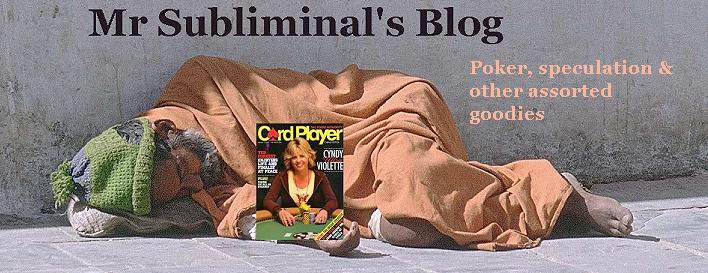Congratulations to Heafy for correctly solving my riddle. This leads me into some interesting observations I made about the frequency of flushes and full houses (boats) based on the statistical reports of Turbo Texas Hold'em, which I posted to 2+2 in August, 1998.
Contrary to the mathematics of a 52 card deck, a tight player will end up with more full houses than flushes. By "end up" I don't necessarily mean winning the hand (though this also holds true for hands won), so theoretically the hand could have been made on the flop and folded on the turn or river, or, of course, beaten. An average player will experience about the same number of fulls and flushes, while a loose player reverts to the statistical norm and has more flushes (both hot and cold) than full houses. For a given tight player, the difference is greatest when he's under the gun, and as the starting hand possibilities increase with position so does the gap between fulls and flushes close, till we reach the button where the number of fulls and flushes is about equal. The small blind then reverts back to UTG conditions, while the big blind, not surprisingly, is the only position (for a tight player) where flushes outnumber fulls, as nature intended them to do.
The European variation of 5 card draw, which I've played a fair bit of, has 2-6 removed ie. uses a 32 card deck. In this game, as opposed to its American 52 card counterpart, flushes beat full houses. This is because flushes are less frequent than fulls in a 32 card (7-A) deck. The tight player in hold'em (especially in the early positions) has also in effect removed 2-6 from his starting hands. This may partially explain the phenomenom described above.
Tuesday, November 29, 2005
Flushes and boats
Posted by
Mr Subliminal
at
1:13 AM
![]()
Subscribe to:
Post Comments (Atom)




0 comments:
Post a Comment